Usually, this is caused by a bad connection.
Some of the OBD connector terminals are either dirty, corroded or bent.
- Try pulling the bottom edge of the IIDTool towards the seat or towards the door or center console (Range Rover 2002-2006). It may work and if the force is released, the unit will no longer respond to cruise control commands. In severe cases, it will not work even if the unit is pulled or pushed.
- Inspect and clean the terminals. Wires may be corroded if water reached this area. Use a contact cleaner that can be sprayed on the OBD connector and use the IIDTool to clean the connector by quickly connecting it in and out. A small and thin nail file can also be used to clean each terminal one by one. Remove the OBD connector to gain access to the wires and verify their condition. Instructions on how to remove the OBD connector can be found below. Yes, it’s normal for the OBD connector not to have all terminals in it. And yes, it is by design that the IIDTool connector has two longer pins. These are two ground pins that need to connect first when you plug the unit.
- Sometimes mechanics are a bit rough when connecting or using their Diagnostic units and this can bend the terminals.
All except Range Rover 2002-2009
Here’s how they look when bent
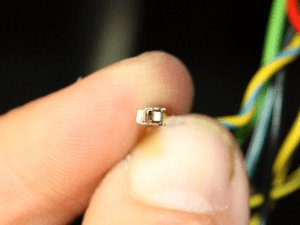
Bent and fitted to the connector
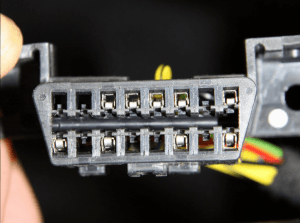
Use a small jeweler’s screwdriver to remove each terminal and close up the blades in each terminal
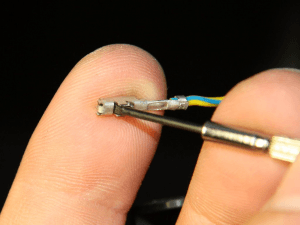
Repaired
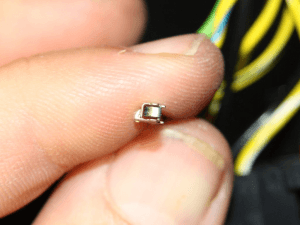
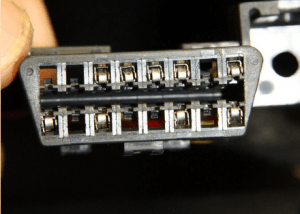
For Range Rover 2002-2009
The following picture shows the difference between a bad and a good terminal. The bad terminal is exaggerated for the purpose of this explanation.
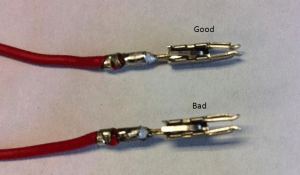
You can repair the terminals with the OBD connector still in place but we recommend removing the OBD connector from its housing for ease of access. Unless you have the correct tool, the terminals are hard to remove from the OBD connector, we do not recommend it. You can do the repairs with the terminals still in place.
Here are some pictures showing how to remove the OBD connector from its housing on a Range Rover 2002-2006.
First, remove the plastic cover on the driver side.
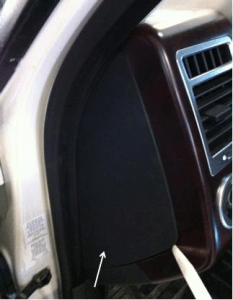
Looking into the hole, you will see the OBD connector.
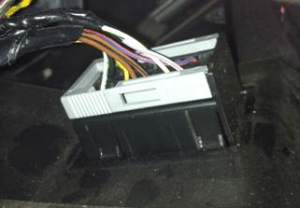
Pull on the grey lock to unlock the OBD connector.
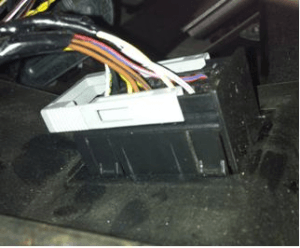
Push on the OBD connector.
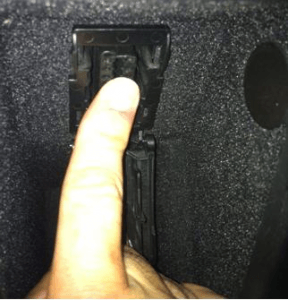
The OBD connector is now released from its housing.
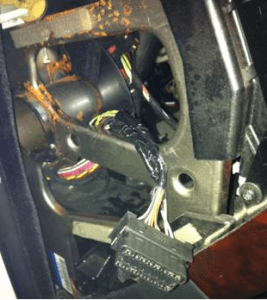
The process is similar for 2007-2009 Range Rover except for the first step which involves removing the lower dash cover where the pedals are located.
To repair the terminals, simply insert a trombone like metal rod into the small opening at the top of the OBD connector (see pictures below). Inserting the trombone is most likely to be enough to do the repair. Repeat the process for the bottom opening. Be careful to insert the trombone correctly (straight or at a small angle away from the terminal) to prevent bending the terminal too much. Here are some pictures showing the process. In this case, we used a tool to remove the SIM card from an IPhone.
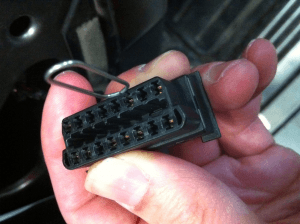
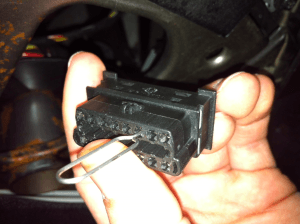
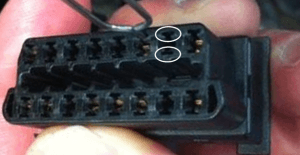


Leave A Comment
You must be logged in to post a comment.